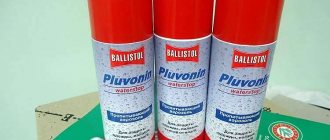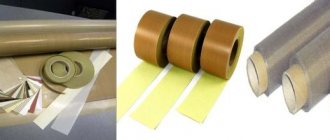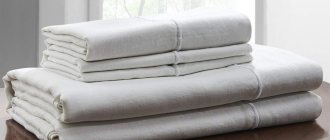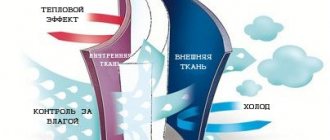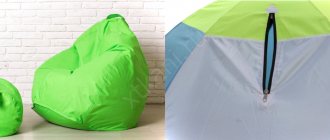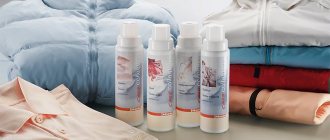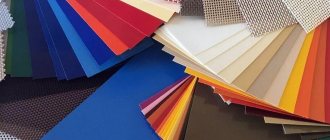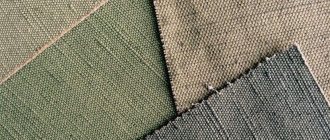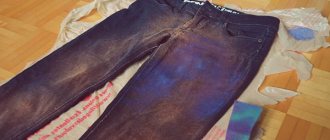At a price of 50 rubles per sq. m.
With a positive conclusion from the Ministry of Emergency Situations
from a company with 14 years of experience
Ask a Question
Interior materials are easily flammable, and the flame spreads through the fabrics at great speed. For this reason, flame retardancy of fabrics is of great importance.
The scope of our fire protection is shopping malls, educational institutions, administrative buildings, train stations and other public places where the risk of fire is increased.
We offer fire protection for any textile materials.
We produce:
- Fire retardant treatment of carpets and carpeting, paths on evacuation routes;
- Fire retardant impregnation of curtains, textiles, curtains, fabric decor
- Treatment of curtains;
- Fire protection of workwear.
We offer fire-retardant treatment of fabrics in Moscow and the Moscow region
With fireproofing work, we save people’s lives and guarantee that the protective material is capable of holding back direct flames for 120 minutes
We apply impregnations using sprayers, brushes, rollers and by dipping the material into the solution.
In our work, we use special compounds for processing textiles, bioprenes, which, when exposed to high temperatures, are capable of forming a special film. In this case, the surface of the fabric becomes airtight and the ignition stops. Bioprenes also reduce the volume of smoke generated.
Thanks to the work of our specialists, you will reduce the possibility of fires to a minimum.
We have already protected more than 70 objects and guarantee increased resistance to direct exposure to fire and high temperatures
Call: 8 (495) 150-5-987 and consult for free!
Prices for fire protection fabrics
The cost of fire protection is calculated according to the volume and complexity of the work, taking into account the composition, type and density of the material.
Estimated cost of fire retardant fabric treatment
| Name | Fire danger indicator | Price |
| Fire retardant treatment of fabrics (carpets, curtains, stage curtains, textile decorations) | from 70 rub. for 1 sq.m. | |
| Impregnation of carpets | For fire hazard class KM2 (escape routes, auditoriums) | from 140 rub. for 1 sq.m. |
Calculation of the cost of fire protection work depends on many factors and on regulatory and technical requirements.
You can always find out the exact cost of fire protection for fabrics from a specialist from our company by calling: 8 (495) 150-5-987. You can also use the electronic application form on the website.
is a certified dealer of the best domestic and foreign manufacturers of fireproof materials.
Advantages
When it comes to fire safety, you need to choose the best. Because the consequences of a wrong choice can be disastrous. has been working in the market of fire protection services in Moscow and the region for several years now. During this time we have become market leaders. We take on large volumes of work and successfully complete them in a short time.
Ordering fire protection from us means receiving the following advantages:
- Safety and high quality of formulations.
- Guarantee for work performed.
- Comprehensive turnkey work.
- Free preliminary visit of a specialist to the site to assess the scope of work.
- No foreign odor after the procedure.
- Possibility of cash and non-cash payments.
- Preserving the beautiful appearance and color of textiles.
- Cleanliness of work: we do not leave behind garbage and do not dirty the interior.
That's why 70 customers have already chosen us
- We treat fabrics only with high-quality and safe, odorless compounds.
- We guarantee that the color, pattern and all fabric properties and texture will remain unchanged.
- We treat with fire retardant compounds without traces, stains or streaks.
- We carefully select fire-retardant compounds, taking into account the tissue structure;
- We work according to regulatory documents (GOST R 50810-95 and NPB 257-02);
Important!
All compositions have hygienic certificates and allow you to get the maximum effect without damaging the materials themselves.
DIY equipment - how to make waterproof fabric for a hike
Good day, dear readers. In today's article I will talk about travel products made from waterproof fabrics and how to make them yourself. These days, hydrophobic materials are ubiquitous, used in the manufacture of a wide variety of things - from tents to bags, from sneakers to down jackets. Meanwhile, water resistance is an unstable property; it quickly disappears. And buyers do not always understand how to properly care for waterproof items and how to replace them if necessary.
From the article you will learn:
- how manufacturers make travel clothing waterproof;
- how long its properties last;
- what products for restoring waterproofness are commercially available and how to use them;
- how to make your own water-repellent fabric;
- Waterproof and water-repellent properties of fabrics
- Special impregnations
- How to make fabric waterproof yourself
- Results
Photos on fire protection
Fire protection of fabric in a restaurant in the elite village of Zhukovka
TechStroyGarant specialists completed work on applying the fire retardant composition "NORTEX KP" to carpets and the fire retardant composition "NORTEX S" to semi-synthetic curtains in the restaurant "Moscow Nights" in the Odintsovo district.
Read more >>
Fire protection of escape routes in the European shopping center
TechStroyGarant specialists performed fire protection of escape routes (stairs) in the Victoria Secret women's clothing store (EUROPEYSKY shopping center) in Moscow. Fire retardant treatment using fire retardant acrylic paint in an organic solvent.
Read more >>
Fire retardant and anti-corrosion treatment in the elite residential complex Polyanka 44
Fire protection of load-bearing metal structures and anti-corrosion treatment of the construction site of a residential complex with an underground parking lot “Polyanka 44” has been completed. The reconstruction of the residential complex is being carried out by a large general contractor "CODEST". The most modern and reliable fireproof materials Promat were used.
Read more >>
How to order fire protection fabrics from our company
- You can order fire protection work in Moscow or another region by phone or on the website.
- Our specialist accepts the application and discusses with you the details of ensuring the security of the facility.
- We coordinate with you a visit to the site and examine the scope of work: we select a fire protection method and materials, draw up a plan, determine the deadlines, and agree on the estimate.
- We carry out processing on site or in the campaign premises, drying the material.
- We test the samples with fire (the fabric should not burn for more than 5 minutes) and water to check the consistency of the composition.
- We hand over the work of the fire laboratory, after which you receive a certificate of completion, a license from the Ministry of Emergency Situations, a certificate for the fire resistance of materials, and a conclusion from a fire laboratory expert.
- We monitor the quality of fire-resistant coatings annually.
We provide comprehensive turnkey services and guarantee high quality of work performed.
The fire protection requirements for fabrics that we follow are determined by GOST and other basic standards - NPB (fire safety standards), ISO, SNiP.
Our licenses
License No. 50-B/00378
SRO extract N0000627
More details
Types and types
There are two types of impregnation:
- Surface is a method of applying fire retardant mixtures, compositions for which paint brushes, rollers or spray guns are used to spray fire retardant compounds under pressure to uniformly cover the protected surfaces of wooden building elements from all sides.
- Deep. This method, which is the least common due to its complexity, the magnitude of material and time costs, and the relatively small yield/quantity of finished commercial products, requires impregnation baths with cyclic temperature conditions, autoclaves to create excess pressure of fire-retardant aqueous solutions for their penetration into the depths of solid wood.
Although lumber prepared by the second method is of much better quality in terms of resistance to fire, it is not widely used.
Wood impregnation was invented a long time ago, so over the centuries a variety of substances, their mixtures and formulations have been used for these purposes. Today there are several main types, types, brands and names from leading companies producing paint and varnish products, various protective coatings; One of the types of which is fire retardant impregnation for various construction, finishing, decorative, textile materials:
- These are the compositions “MS”, “PP”, “VIM-1” for the surface application method, “MS 1:1”, “BANN 1”, NLA-8 - for deep impregnation. These compositions have been known since the times of the Soviet Union, but due to their low cost and fairly high fire-retardant effect, they are still used to this day, often under completely different names and trademarks to add credibility and increase prices.
- More modern and more expensive, both dry mixtures and ready-made aqueous solutions, packaged in plastic containers from 1 to 50 liters are “Pirilax”, “Old Elm”, “KSD”, “OZK-45D”, “Attik-MS” , “Pyrex”, “Claude-01”, “Ograx”, “TP” and many other fire-retardant impregnations, overwhelmingly from domestic manufacturers; because Imported products today are prohibitively expensive with dubious, perhaps only in advertising terms, superiority in technical application parameters and operational properties.
An important indicator for all fire retardant impregnations is the wood fire protection group, which they can provide based on their properties, confirmed by a fire safety certificate:
- Group I fire-retardant efficiency means that a standard sample of wood impregnated with fire retardants will lose up to 9% of its mass during fire tests. This can be achieved either by deep impregnation in industrial autoclaves under pressure, hot baths with alternating heating and cooling modes; and by repeated sequential surface application of high-quality modern compounds capable of penetrating into the wood structure without external influence - increasing pressure, temperature, changing its basic properties. Thus, although wood does not cease to be a combustible material, it becomes difficult to burn according to fire safety standards.
- Group II of the effectiveness of fire-retardant impregnation shows that wood treated with this composition becomes difficult to ignite, losing from 9 to 30% of the mass of the sample during a fire test.
The use of fire retardant impregnations of efficiency group I is not only more promising and beneficial for construction and operating organizations in terms of converting wood to a more non-combustible state, but also significantly increases the processing time of fire retardant impregnation, on average, instead of at least once a year - before application 3– 5 years. But, of course, this depends on design decisions and the allocated budget for fire safety measures.
For wooden structures
Those who tried to light a fire in the forest or light a stove in a bathhouse at the dacha with raw firewood probably remember what a painful and pointless process it was. Indeed, it is difficult to ignite wood with high humidity, especially using low-calorie sources - a burning match, the fire of a lighter.
However, if the wood is dried in the sun or under the iron roof of a residential building in the form of rafters or sheathing, then it is much easier to light it. In addition to removing moisture, when heated, the release of volatile flammable substances begins, of which there are many in the composition of this natural material impregnated with resins. Then a small source of ignition is enough for the combustion process to begin and develop independently.
Fire retardants in the composition of fire retardant impregnation, penetrating as deeply as possible into the surface and deeper layers of a wooden board or beam, prevent both ignition and combustion due to the non-flammability of the resulting protective film/shell, and prevent the release of aromatic organic substances from the depths of the wood mass when it is heated .
If a fire does occur, then the fire-retardant impregnation continues to act, reducing the rate of surface spread of fire along the surfaces of wooden structures and building elements; As a result, they char but burn poorly.
Previously, rafter systems and sheathing of buildings for various purposes - this is up to 90-95% of the total volume of fire-retardant impregnation of wood in our country - was painted/whitened with a solution of lime or clay, creating over the years an effective protective “shell” of mineral dry substances; Today, aqueous solutions of fire retardants are used, which in one or two successive applications transform the wood into the fire-retardant efficiency group I and II required by the standards for operating facilities or design solutions for newly constructed buildings.
This method of passive fire protection, although it causes restrained pessimism and doubts among many managers of enterprises, organizations, and building owners due to its, in their opinion, archaic approach; but this works quite effectively in practice, without other alternatives, because replacement of wood in construction due to the transition to non-combustible materials is not yet expected.
For fabric
This is a rather narrow segment of the fire retardant treatment market, intended for the treatment of textile materials used in areas where there is a high risk of fire, and where there are regularly many visitors.
Traditionally, this is the treatment of fabrics of curtains, curtains, curtains, and decorations with fire-retardant impregnations; decorative textile finishing of walls, carpets, upholstered furniture in theater, exhibition, entertainment institutions, art galleries, museum complexes; wherever flammable materials cannot be abandoned due to the impossibility of changing the interior due to tradition; as well as fabrics intended for the production of non-flammable workwear.
Modern fire-retardant impregnations for textile materials: “OGNEZA-PO”, “ANTAL”, “Negorin-fabric/fabric-S” for various types and types of fabrics do not change the colors, patterns, appearance of the treated items; Their strength also does not suffer; after drying, no foreign, unpleasant odor appears. In addition, they additionally protect the fabric from rotting.
When fire retardant treatment of textile materials is required
First of all, fire protection measures for fabrics must be taken in places with large crowds of people, because... the risk of accidental fire in such areas is significantly higher. Material flammability testing and processing are carried out at least once every two years.
Upon completion of processing, drapes, curtains and other fabrics for household use (not fire retardant) must comply with the group of flame retardant materials (GOST R 50810). These include:
- carpets, carpeting;
- curtains and curtains;
- drapery of upholstered furniture;
- thermal insulating fabrics used for covers and upholstery;
- bed dress;
- workwear.
The main tasks of fire-retardant fabric treatment:
- preventing accidental fires;
- localization of flame spread;
- reducing the amount of toxic fumes;
- reduction of smoke emission.
More than 10 years of experience in fire protection work! Over 100 completed objects! We carry out any tasks of increased complexity in fire protection of metal, fire protection of wood, fire protection of air ducts and cable lines.
Fabric processing technique
Traditionally, fire protection of fabrics is carried out by applying a fire retardant to them by spraying a solution or dipping the product into it until completely saturated. High-quality flame retardants do not provoke changes in the color scheme of fabrics, do not show stains and eliminate the appearance of unpleasant odors. Upon completion of impregnation, the fabric product does not change in appearance, it is almost impossible to distinguish it from the untreated one, and it also becomes able to satisfy all current standards regarding fire safety - the indicators of toxicity, flammability, ability to generate smoke, the possibility of flame spread, and others change.
Typically, impregnation retains its properties for five years, after which it loses its effectiveness. If fabric material is washed frequently or chemicals are used for cleaning, the impregnation needs to be updated much more often.
Compositions and methods of fire protection of fabric
The composition and technology for fire-retardant treatment of fabrics are selected in accordance with regulatory requirements (GOST, NPB, etc.), based on two main criteria:
- required fire protection limit and degree of biological protection;
- textile material.
Basic fire protection technologies for textiles (GOST):
- fireproof impregnations;
- coating the surface of fabrics with fire-retardant coatings (increases fire resistance up to 3 hours);
- use of fire-retardant fabrics manufactured in factories.
Fabrics originally intended for fire retardant purposes are subjected to factory processing:
- uniforms for welding and other flammable work;
- fireproof asbestos fabric, etc.
Factory processing is carried out by immersing the material in a container with a fire retardant compound and then drying it. Samples must undergo fire testing. In addition, mechanical methods of fabric fire protection are used in production - for example, reinforcing the material with steel wire.
Important!
Upholstered furniture and carpets can be processed without dismantling directly at the site of use.
In this case, the surface is generously moistened with the selected composition. This can be done while cleaning the product by mixing the fire retardant with washing liquid in equal parts. In addition to imparting fire-retardant properties to the material, impregnations and paint coatings help reduce the level of smoke formation and toxic emissions in the event of fire. The composition is applied to the surface of the product using airless spraying units.
Another way to provide fire protection is to use fire-resistant fabric. This method is used when impregnation/painting materials are for some reason impossible or impractical. Furniture covers are made from fire-resistant fabric. Reflective fiberglass fabric can be used to insulate concrete and steel structures.
note
See how our specialists treated wooden structures with fire retardant compounds from the manufacturer NORT in Congress.
Surface impregnation of cellulose-based textiles can also be carried out using fire retardant compounds for wood (fire protection category 1 agents). Synthetics always require special compounds. They are also used for combined fabrics containing 35 percent or more polymer. The higher the polymer content, the higher the consumption of fire retardant.
In addition to the chemical composition, the choice of fire protection product and technology is also influenced by other characteristics of the fabric - structure, surface density, thickness, etc.
FIRE PROTECTION
Types of impregnations
Fabric impregnations are divided into three types according to their functions:
The third type prevents rotting and the proliferation of bacteria and is rarely used for fabrics (mainly for jute and semi-jute materials). Fireproof and water-repellent impregnations are more in demand.
Water-repellent impregnation
After treatment with such compounds, moisture and water do not penetrate through the fabric. Depending on the material and purpose of processing the fabric, one of the types of water-repellent impregnation is selected:
Impregnation type WR
The most popular type is WR type impregnation, which is applied only to the outside of the material. The treated fabric is not susceptible to getting wet, as drops of water roll down the protective layer.
Also, the fabric does not become damp at high humidity, since the impregnation layer does not allow even the smallest water molecules to pass through in the form of steam or fog.
Polyurethane impregnation (PU)
It is applied to the inside of the material, which may get wet from the outside, but the moisture will not seep through.
Impregnation DuPont
Teflon impregnation (DuPont) is an analogue of WR impregnation, but unlike it, it is applied to products that are used in more severe conditions. Teflon impregnation is most often used for impregnating furniture fabric, tents and outerwear.
Impregnation PD
PD impregnation is applied to the inner surface of the fabric and not only prevents the penetration of moisture, but also makes the material more durable. In clothing it is often used in combination with other types of impregnations.
Silver and Ultra Foil impregnations are also used for clothing. The first is applied to clothing from the outside and, in addition to water-repellent properties, has sun protection properties, preventing the material from fading. Ultra Foil is applied from the inside and forms a durable, shiny protective layer.
A separate item is silicone impregnation, which is applied to tents and is not used for clothing. This is due to the high cost of the product, the complexity of the application process and low efficiency compared to polyurethane analogues.
Impregnations for membrane fabrics
The principle of operation of membrane fabric is based on the fact that it absorbs moisture without letting it in. But the water accumulated inside the membranes prevents heat from escaping to the outside, so although such hydrophobic fabric is effective, a person quickly begins to sweat in clothes made of such material.
In addition, if moisture does not roll down the impregnation layer, but is absorbed into the fabric, the clothes become heavier. DWR is mainly used for processing clothing and accessories for tourists, as well as for some types of military uniforms.
Despite its water-repellent properties, DWR impregnation is water-soluble. Under normal conditions, the protective layer is damaged very slowly, but such items must be washed using special products that do not damage the protection.
Fire retardant impregnation
Fireproofing impregnation is used to treat workwear, but is sometimes used to treat tents (tourist and military). This impregnation does not guarantee complete protection against fire and burns: at high temperatures such a layer melts, but this can happen for different times depending on the composition of the impregnation.
The fabric itself also plays a big role. So, a tarpaulin, which itself is canvas impregnated with water-repellent and fire-resistant compounds, will not burn.
If you treat cotton or other knitted fabric with the strongest fire-retardant impregnation, sooner or later the protective layer will collapse and the material will begin to burn.
carpets
prices from 120 rubles
protection from direct flame exposure up to 4 hours
ORDER
Methods of fire protection of materials
There are two main methods of fire protection of materials:
- processing, the purpose of which is to create a coating of fire-resistant, sparingly soluble compounds on the surface;
- modification of the fibers themselves, in which the molecules of the fire retardant composition form stable bonds with polymer molecules.
Requirements for applying fire retardant:
These requirements are mandatory for fire protection of textiles:
- the material being processed must be dry;
- processing conditions – temperature from +10 and above, humidity within 70%, no precipitation or direct sunlight;
- application methods - airless spraying, hand tools (roller, brush), immersion of the material in a container with a fire retardant compound;
- during surface treatment, application should be uniform;
- The aesthetic properties of the fabric should not deteriorate.
Do-it-yourself water-repellent impregnation
I don’t think anyone needs to explain why a prepper might need water-repellent impregnation. Another thing is that it is not always possible to simply buy it. And if everything goes exactly as the survivalists expect, then there will certainly be no opportunity to buy anything for a long time. But rain and high humidity have not been canceled, so making your clothes and tent waterproof is an extremely good idea. And if you consider that such fabric also gets dirty much worse, then it becomes clear why people develop recipes for water-repellent impregnation using improvised materials.
There are three effective ways to create water-repellent impregnation at home. But they have some disadvantages, such as the need to use ingredients that cannot be found in the wild. Seriously, we don’t know, for example, what can replace laundry soap. As for other substances, everything is much simpler with them and their analogues can be found in nature. So.
Option 1
- laundry soap – 500 grams
- baking soda – 500 grams
- rosin powder – 500 grams
- acetone or ethyl alcohol – 500 mg
- water – 5 liters
Grind the soap to shavings. You can use a grater, or you can simply plan it with a knife. We heat the water, but not to 100 degrees, but to 70 - that is, we barely bring it to a boil. Dissolve soap shavings and soda in it. We pour rosin powder into alcohol, since it dissolves poorly in water, but, on the contrary, it dissolves well in a chemical solvent. Pour the alcohol and rosin into water and mix everything thoroughly.
We take the fabric that is to be soaked and immerse it in water for 12 hours (no less). After that, take it out, squeeze it lightly (just lightly) and lay it out to dry on a horizontal surface. The water will evaporate, but the fibers will be saturated with rosin, so they will absorb liquid much worse. This does not affect the color, nor does it affect the strength of the fabric. Of course, water-repellent impregnation will not be 100 percent effective, but the fabric will actually dry much faster and, on the contrary, get wet more slowly.
If you don’t have rosin powder at hand (and most likely you won’t have it), then it can be completely replaced by ordinary resin, which can simply be collected in the forest, especially in coniferous ones. It's not difficult, but it can take a lot of time. Alcohol can be obtained if you understand at least a little the principles of moonshine brewing (we will definitely tell you about this, but another time). Soda can be obtained from the ash of burned algae. By the way, this is a rather interesting point. The problem is that some recipes call for baking soda (sodium bicarbonate) rather than baking soda (sodium carbonate). And according to the classics, laundry soda was used to produce soap, which is much easier to obtain. So we will use this water-repellent impregnation
Option 2
- water – 10 liters
- laundry soap – 500 grams
- alum – 500 grams
Dissolve the soap in 5 liters of warm water, immerse the fabric in it for a while and remove it, squeezing it lightly. After this, dissolve all the alum in the remaining water, immerse the fabric in it again, leave it for a while, take it out and let it dry.
There is another way - the step with soap is exactly the same, but the alum solution is sprayed onto the fabric through a regular spray bottle. You just need to make sure that the insoluble sediment does not clog the outlet hole. You need to spray until the liquid begins to drain from the fabric. Next, let it dry a little and apply alum again.
Option 3
- water – 6 liters
- alum – 150 grams
- lead acetate – 150 grams
Actually, the good thing about this method is that the ingredients needed for water-repellent impregnation can be found in the wild. It's difficult, but it's possible. The downside is that the mixture in which the fabrics are to be soaked is poisonous. So the dishes will at least need to be thoroughly washed. Yes, and it’s better to work with gloves.
Lead sugar is an ancient sweetener obtained by boiling grape wine in lead cauldrons. Finding lead salts is difficult, but it’s also possible to treat them with a bite and get acetate. As for alum, these are complex salts in which both an alkali metal and an ordinary metal are present. Most often, alum is based on aluminum and can easily be found in the wild.
So, in one vessel, dissolve lead acetate (lead sugar) in 3 liters of warm water. In the second - alum in a similar amount. Give them time to settle, remove the sediment and drain the solutions together. Give them a few more hours to settle, remove the sediment and place the fabric there for a day. After that, dry the fabric without squeezing. This will give it not only protection from moisture, but also make it fire resistant.
PS. Oh yes, gentlemen, no one says that “This is how anyone can find the necessary chemicals in the wild!” We understand perfectly well that without at least basic knowledge of geology and chemistry this will not work. However, it is theoretically possible, and with some training it will become possible in practice. But no, no one said it was easy.
How textiles are treated with fire-retardant compounds
When processing by the first method, the composition (temperature +60 degrees maximum) is applied to the surface, after which the material is wrung out and dried on drying drums at temperatures up to 150 degrees.
Sequence of processing using the second method:
- Immersion in the composition (temperature 60-70 degrees).
- Spin at 85-90%.
- Drying at a temperature of 100-120 degrees.
- Processing in a heat chamber (+170).
- Rinse in water (30-40°).
- Drying at 100-120°.
The consumption of the composition in both cases depends on the density of the textile and varies between 160-500 g per sq.m.
Important!
When necessary, fire retardant treatments are combined with hydrophobic and oil-repellent compounds.
If the use of combined technologies is required, the combination of these products is first tested for effectiveness.
fire protection from experts
